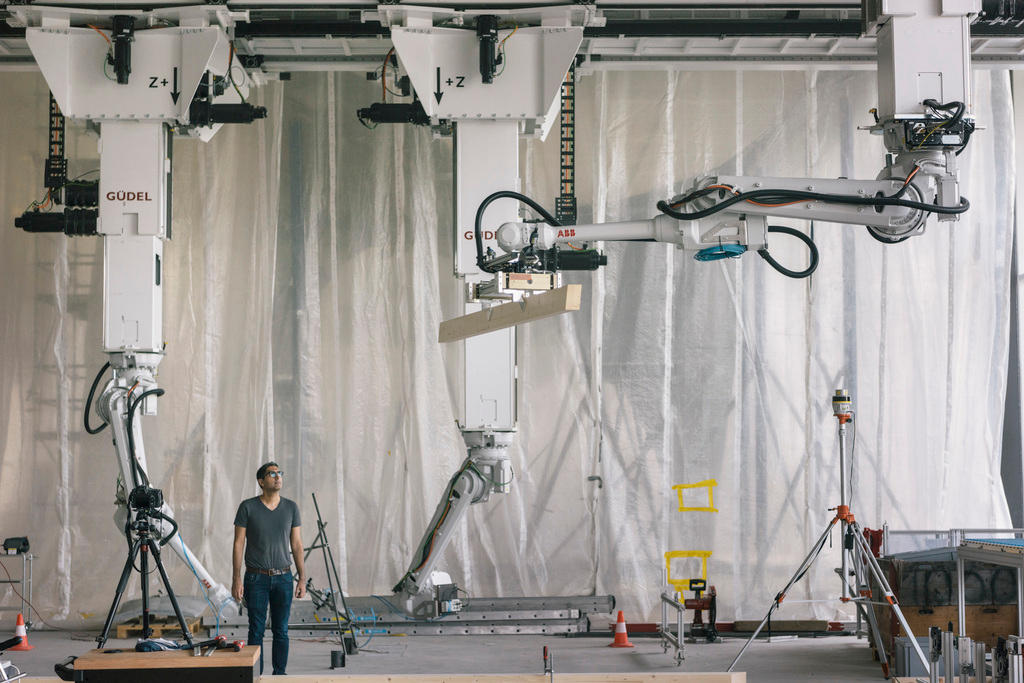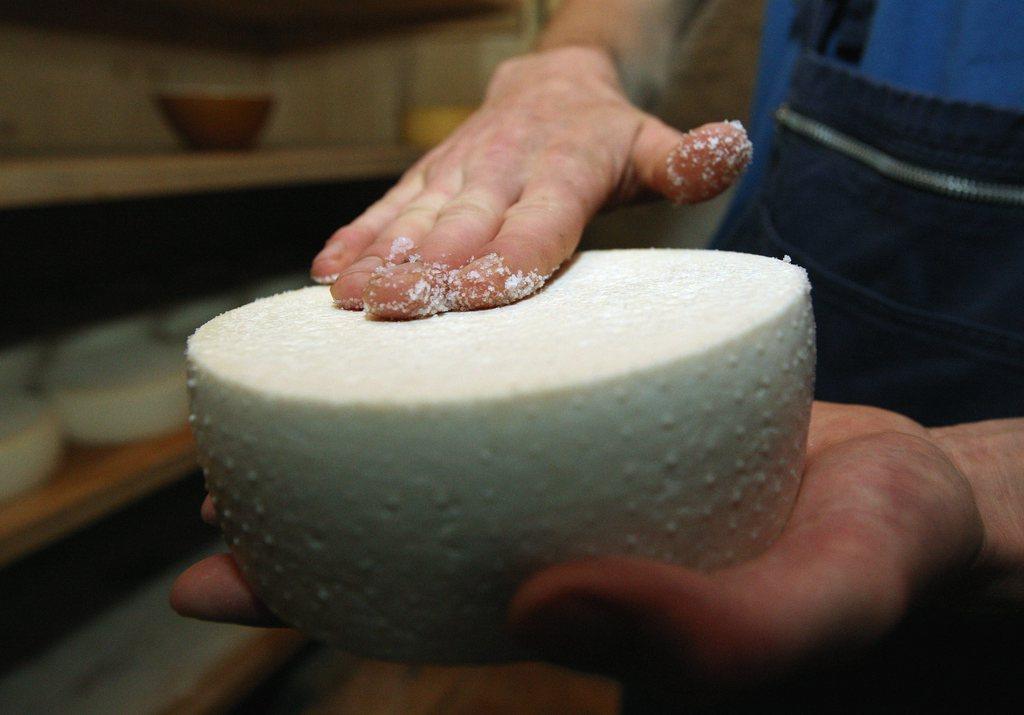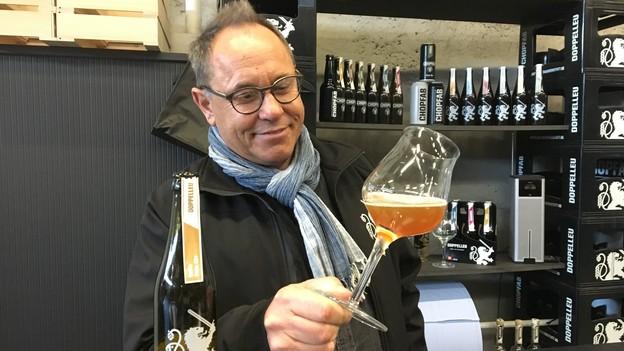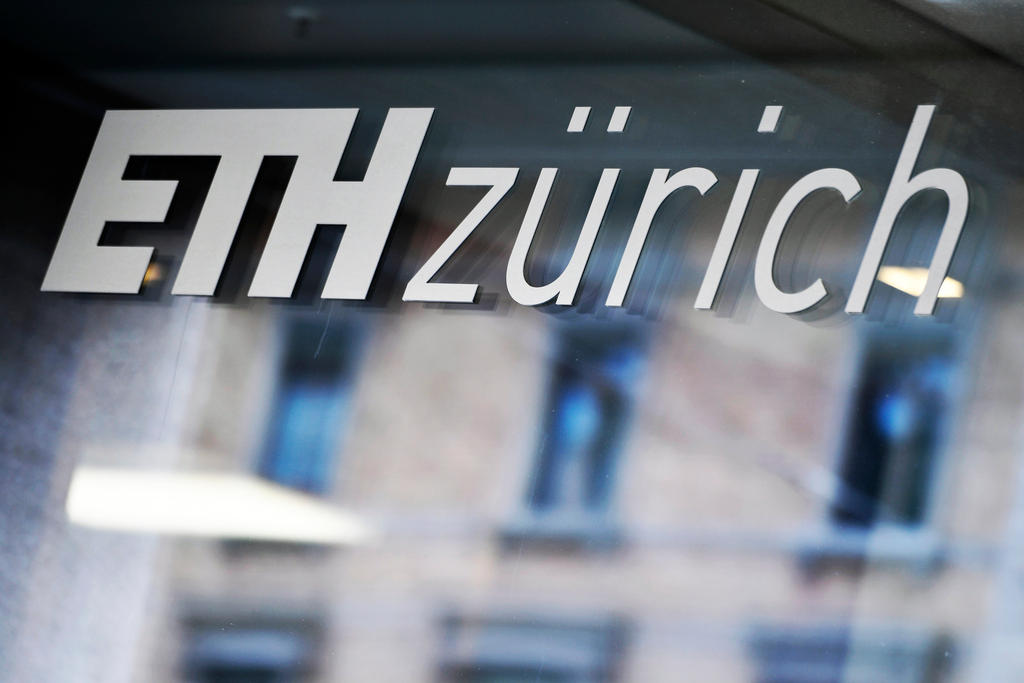A new model for Swiss innovation

On Tuesday, the World Intellectual Property Organization named Switzerland the most innovative country for the eighth year in a row. André Kudelski, president of the newly rebranded Swiss innovation agency Innosuisse, spoke earlier this year with swissinfo.ch about how the country can avoid complacency, and why taking risks is a sure path to success.
Traditional Swiss excellence in the areas of trademark filings, scientific publications and education spending, as well as emerging strengths in mobile app creation and green technologies, all helped the alpine nation claim the top spot in WIPO’s 2018 Global Innovation IndexExternal link of 126 countries.
+ WIPO crowns Switzerland as world’s most innovative nation
The report was published a little over halfway into the inaugural year of Innosuisse, which in January replaced the government’s executive Commission for Technology and Innovation (CTI). Since 1996, CTI had been responsible for providing consulting services and financing to “help turn scientific research into economic results” in Switzerland. Now Innosuisse, a federal organisation under public law, has a similar missionExternal link.

But for a country so often described as ‘number one in innovation’, does Innosuisse see much room for improvement?
“We cannot act as though a static solution to a dynamic problem is the way to go forward,” explained Innosuisse Board President André Kudelski. He spoke with swissinfo.ch in March, shortly after he took up the post, from the Cheseaux headquarters of Swiss digital security firm Kudelski Group, of which he is CEOExternal link.
“CTI has been very successful in helping Switzerland become the leading country in terms of innovation. [But] it’s a fast-moving target; the world is changing and competitors are constantly improving. To address this competition, we need to become more agile and adapt quickly to these new conditions.”
Kudelski said that Innosuisse would have greater independence than its predecessor, while still operating within a federal framework.
“Innosuisse has some of the characteristics of a private enterprise, but its sole shareholder is the Swiss Confederation. We have additional autonomy compared to the CTI, but we naturally have to follow the federal framework as public money is involved,” he said.
‘Connecting the dots’
Innosuisse has at its disposal CHF950million ($1 billion) for its first four years. Kudelski said a main spending priority is promoting collaboration between private companies – including start-ups – and research institutions. Another is supporting the innovation efforts of Switzerland’s small and medium enterprises (SMEs).
For him, the biggest potential lies not just in SMEs themselves, but in their connections with the research institutions that make Switzerland “a superpower in terms of academic research”.
“[We must] connect the dots between the SMEs and research that is done at the university level and provide financial support for such projects. Many SMEs may have good business ideas, but not the critical mass in terms of investment capability to pay for the R&D that is needed to make disruptiveExternal link changes. Here, Innosuisse can really help.”
For example, if an SME has an idea or concept in the field of digitalisation, Kudelski explained, Innosuisse can help it identify partners working in that area, at one of the Swiss Federal Technology InstitutesExternal link for example, and then fund the research done at the university level.
The goal, Kudelski said, is to think about innovation not in terms of success at the project level, but of the overall outputs, including the creation of skilled jobs and the production of intellectual property.
Innosuisse states that it operates according to the subsidiarity principleExternal link, only supporting projects “if the innovation could not be implemented and market potential would not be tapped into without funding.” Its specific activities includeExternal link:
- Helping start-ups realise business ideas (through training programmes, coaching, and support programmes such as grants and interest-free loans)
- Assisting with business (especially SME) innovation projects, and those of public research institutions
- Helping firms do business internationally by helping them launch market-ready product ideas, and supporting start-ups that want to branch out internationally via market entry campsExternal link and the Enterprise Europe NetworkExternal link
- Organising networks and specialist events in key innovation fields, and coordinating awareness-raising activities.
Embracing the unknown
Another priority for Innosuisse is to increase Switzerland’s ability to take “calculated risks”. But risk-taking doesn’t just mean investing in every innovation opportunity that presents itself; Kudelski speaks of a “diversified” strategy.
“This is a core focus of Innosuisse: not just investing in average projects that have an average risk and an average return, but to have some high-risk, high-return projects as well as some lower risk, lower-return projects, in order to balance the overall risk-reward distribution.”
Put more simply, he said, “we want to give Switzerland the opportunity to create some real blockbusters in terms of companies and projects.”
Of course, inherent in the concept of risk is the possibility of failure. When it comes to failing, Kudelski said it’s important to stay focused on the bigger picture.
“We need to have the right to fail. You cannot have a real success if you do not accept the risk of losing. That’s why it’s important to measure success, not by looking at individual projects but at the aggregate level. If we focus too much on a single project, this will contribute to a culture that is overly risk-averse.”
Innosuisse’s increased flexibility and freedom should help in pursuing this diversified risk strategy. In addition to the new governance model, on February 14, the Swiss Federal Council approved an “Innovation Policy OverviewExternal link” (in French, German and Italian), which said that the Swiss innovation system is able to respond to challenges and deal with emerging issues affecting its innovation capacity. Therefore, the report concluded, no additional laws or specific direction from the government are needed.
“For me, that’s a sign that we can continue to be creative in the new model,” Kudelski said.
“Taking risks is about understanding the risk-reward profile of a project and to have the willingness to take a risk even if we don’t have perfect information. Fundamentally, if you have a project that has high potential, not everything can be known in advance – if it could, it would already have been done by someone else.”
@_InnosuisseExternal link, the Swiss Innovation Agency, assumed the responsibilities of the former #CTIExternal link on 1 January 2018. Under its new name and with a new organisational structure, it will continue to support science-based #innovationsExternal link in Switzerland. https://t.co/D4yRGtwkhfExternal link pic.twitter.com/x5H78nBGG5External link
— Innosuisse (@_Innosuisse) January 3, 2018External link
An international mindset
Looking beyond Swiss borders for innovation opportunities and collaboration is another opportunity for Innosuisse. Although specific projects can’t yet be shared, Kudelski emphasises that the US and Chinese markets are both Switzerland’s greatest competitors as well as its greatest sources of inspiration
“It’s a question of mindset: we need to think outside the geographic box to look at where the opportunities are. The Swiss market is small, and the European market is very fragmented. That means we need to have some insight in the US and Chinese markets and avoid the mindset that everything is happening just in Switzerland and Europe.”
As the head of a firm specialising in digital security, Kudelski sees with particular clarity the opportunities for Switzerland in the rapidly growing field of digitalisation. Again, the US and China are key markets to watch, “simply because they have the critical mass that we don’t find in other places”.
But he pointed out that Switzerland’s small size can also be a strength.
“The beauty of being smaller is that you can – indeed, you must – be faster and more agile than the others. It is a question of survival because if we are too slow, the best opportunities will be gone, and the remaining opportunities are more likely to be opportunities to waste time, money and energy.”
On January 1, after 22 years of funding and supporting innovation in Switzerland, the Commission for Technology and Innovation (CTI) made the transition to Innosuisse. The change was first put into motion in 2014 in a decision made by the Swiss government.
In 2016, after the Swiss Senate and House of Representatives approved the Innosuisse Act, the Federal Council appointed seven expert representatives from science and industry to the Innosuisse BoardExternal link. The other arms of the organisation consist of the specialist Innovation CouncilExternal link to decide on funding applications and activities with the aid of 37 elected expertsExternal link, as well as the with operational Executive CommitteeExternal link.

In compliance with the JTI standards
More: SWI swissinfo.ch certified by the Journalism Trust Initiative






You can find an overview of ongoing debates with our journalists here. Please join us!
If you want to start a conversation about a topic raised in this article or want to report factual errors, email us at english@swissinfo.ch.